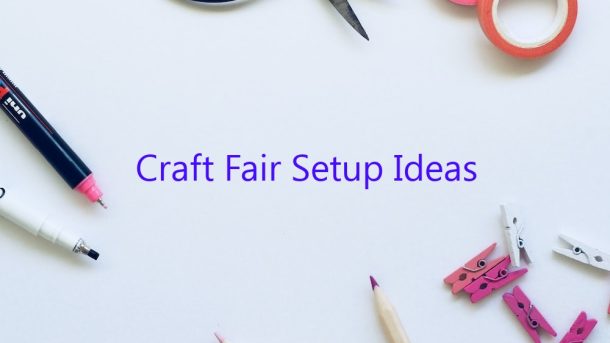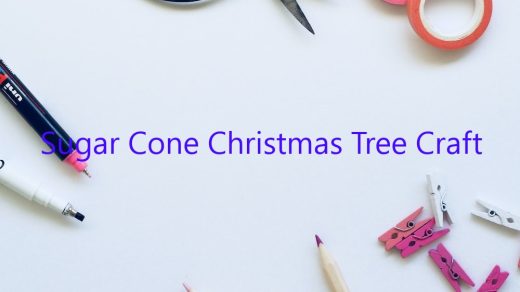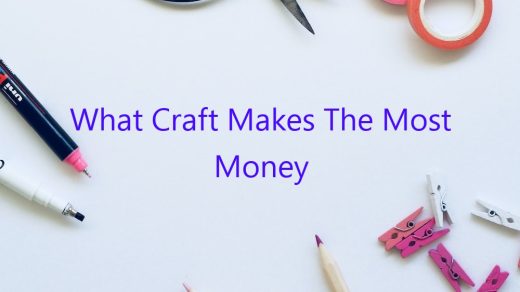If you’re planning to participate in a craft fair, it’s important to have a well-organized booth. Here are some tips for setting up your space:
1. Start by determining the size of your booth. Be sure to leave enough room for people to walk around, and make sure you have enough space to display your products.
2. Choose a display that will showcase your products in an attractive way. You may want to use a table or a stand to hold your products, or you could create a display using a backdrop and props.
3. Make sure you have enough product to sell. It’s a good idea to bring a few extra items in case of unexpected sales.
4. Make a price list for your products and be prepared to negotiate prices with potential buyers.
5. Plan your branding strategy. Decide what type of signage you want to use, and make sure your booth is neatly organized and well-decorated.
6. Be prepared to talk about your products. Craft fairs are a great opportunity to connect with potential customers and explain the benefits of your products.
7. Have fun! A craft fair is a great opportunity to meet other vendors and learn about new products.
Contents [hide]
How many products should you have for a craft fair?
Craft fairs are a great opportunity to sell your handmade products to a wider audience. They can also be a lot of fun, but it’s important to make sure that you have enough products to sell. How many products should you have for a craft fair?
The answer to this question depends on a few factors. The first is the size of the craft fair. If it’s a small, local fair, you probably won’t need more than 10-15 products. If it’s a larger, national fair, you may want to bring more products.
The other factor to consider is the type of products that you’re selling. If you’re selling jewelry, you may only need a few pieces. If you’re selling paintings, you may need a dozen or more.
One thing to keep in mind is that you don’t want to overload your booth with products. Too many products can make your booth look cluttered and unprofessional. It can also be difficult to keep track of everything.
Ideally, you should have enough products to fill your booth, but not so many that it’s difficult to manage. If you’re not sure how many products to bring, start with a few dozen and see how it goes. You can always add more products if you need to.
How do you set up a fair booth?
Setting up a fair booth can be a daunting task, but with a little bit of planning and preparation it can be a breeze. Here are a few tips to help you set up a fair booth that is both fair and fun!
1. Decide on your booth theme.
Before you can start setting up your booth, you need to decide on its theme. What will your booth be about? What kind of products or services will you be selling? Once you have a theme in mind, you can start planning out the specific details.
2. Set up your booth space.
Once you know what you want your booth to look like, you need to set up the space for it. This includes deciding on the size and shape of your booth, as well as the location. You’ll also need to make sure you have enough room for all of your displays and products.
3. Create a display.
Your booth’s display is one of the most important aspects. It’s what will attract people to your booth and show them what you have to offer. Make sure your display is attractive and eye-catching, and that it accurately represents your theme.
4. Plan your activities.
A fair booth isn’t just about selling products and services; it’s also about providing fun and engaging activities for visitors. Plan out a few activities that people can participate in, such as games, contests, or demonstrations.
5. Promote your booth.
To get people to visit your booth, you need to promote it. Start by creating a promotional flyer or poster that explains what your booth is about. Then, distribute it to local businesses, schools, and community organizations. You can also post it on social media or your website.
What items sell best at craft shows?
What items sell best at craft shows? This is a question that often comes up for crafters who are looking to participate in these events. There is no one definitive answer to this question, as the items that sell best at a craft show will vary depending on the specific show and the audience that is attending it. However, there are some general trends that can be observed, and some items that are typically more popular than others.
One of the most popular items that often sell well at craft shows are handmade jewelry. This is likely due to the fact that jewelry is an easily portable and lightweight item, and it can be displayed in a variety of ways. Additionally, jewelry is a very popular item to give as a gift, so there is always a demand for it.
Another item that is often popular at craft shows is hand-sewn items such as quilts, pillows, and tote bags. These items are popular because they are often unique, and they can be a great way to show off your crafting skills. Additionally, they are often relatively affordable, which makes them a popular choice for buyers.
Finally, another item that often sells well at craft shows are home décor items. This is likely due to the fact that buyers often want to purchase items that can be used to decorate their homes. Additionally, many of these items are relatively affordable, which makes them a popular choice for buyers.
How do you stand out at a craft fair?
Craft fairs are a great opportunity to get your work seen by a large number of people, but standing out from the crowd can be tough. Here are a few tips to help you stand out at your next craft fair.
1. Choose the Right Fair
Not all craft fairs are created equal. Do your research and choose a fair that is the right fit for your work. If you are a jewelry maker, for example, a fair that is focused on handmade home decor may not be the best fit.
2. Plan Ahead
Make sure you have everything you need ready to go before the fair starts. This includes your display, business cards, and any other marketing materials you may need.
3. Stand Out in Your Display
Your display is your chance to show off your work in the best possible light. Make sure everything is neatly organized and easy to see.
4. Be Prepared to Talk About Your Work
When someone stops by your booth, be prepared to talk about your work. This means having a brief explanation ready about what you make and how you make it.
5. Have a Good Price Point
It can be tough to find the right price point for your work, but it is important to find one that will allow you to make a profit while still being affordable for your customers.
6. Have Fun!
Craft fairs can be a lot of fun, so make sure to enjoy yourself while you’re there.
What should you not do at a craft show?
When planning to participate in a craft show, it is important to be aware of what you should and should not do in order to make the most of the experience. Below are some tips to keep in mind:
DO NOT bring large pieces that are difficult to transport.
DO NOT bring pieces that are too fragile and could easily be damaged.
DO NOT bring unfinished pieces or pieces that are not completely finished.
DO NOT bring pieces that are too large or too small.
DO NOT bring pieces that are not your own original design.
DO bring pieces that are well-constructed and finished.
DO bring pieces that are easy to transport and that will not be damaged during transport.
DO bring a well-made and professional-looking display for your pieces.
DO dress appropriately for the event.
DO be courteous to other vendors and attendees.
By following these tips, you can make sure that your craft show experience is a positive one.
How do you price items at a craft fair?
When pricing items for a craft fair, it’s important to consider a few factors. You’ll need to take into account the cost of materials, your time and effort, and any other associated expenses.
To get started, you’ll need to determine how much each item costs to make. This includes the cost of materials and your time and effort. Be sure to factor in any other costs, such as shipping and handling, booth fees, or advertising.
Once you have an idea of how much each item costs to make, you can start pricing them accordingly. Generally, you’ll want to price items at a fraction of the cost of what they would sell for in a store. So, if an item costs $10 to make, you might want to price it at $5 or $6.
Of course, there’s no set rule for pricing items at a craft fair. You may want to experiment with different prices to find what works best for you. Just be sure to stay within your budget, and be prepared to adjust your prices if necessary.
What do I need to sell at a craft fair?
When selling crafts at a fair, it is important to have a variety of items to choose from. You will want to have a mix of items that are both inexpensive and expensive. You will also need a variety of items that are both new and old.
In order to have a successful craft fair, you will need to have a variety of items to sell. You will want to have a mix of items that are both inexpensive and expensive. You will also need a variety of items that are both new and old.
One of the most important things to remember is to have a variety of items to sell. You will want to have a mix of items that are both inexpensive and expensive. You will also need a variety of items that are both new and old.
In addition, you should make sure to have a variety of items that appeal to different customers. You should have a mix of items that are both inexpensive and expensive. You will also need a variety of items that are both new and old.
Finally, you should make sure to have a variety of items that appeal to different customers. You should have a mix of items that are both inexpensive and expensive. You will also need a variety of items that are both new and old.




